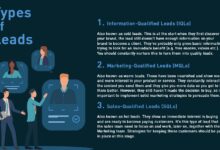leadsonline: 7 Powerful Secrets Revealed for Ultimate Success
Ever wondered how top performers generate consistent, high-quality leads? The secret might just lie in mastering leadsonline. Let’s dive into what makes it a game-changer.
What Is leadsonline and Why It Matters

Understanding the foundation of leadsonline is crucial for anyone looking to scale their business through digital lead generation. At its core, leadsonline refers to a system, platform, or strategy focused on capturing, managing, and converting online leads efficiently. Whether it’s through lead aggregation, lead distribution, or lead nurturing, the term has evolved into a cornerstone of modern digital marketing.
The Evolution of Online Lead Generation
Lead generation has come a long way from cold calling and print ads. With the rise of the internet, businesses shifted focus to digital channels. Platforms like leadsonline emerged to bridge the gap between consumer intent and business offerings. Early forms included simple contact forms, but today’s systems use AI, behavioral tracking, and real-time analytics.
- 1990s: Email campaigns and basic web forms
- 2000s: CRM integration and landing pages
- 2010s: Social media lead ads and automation
- 2020s: AI-driven leadsonline ecosystems
How leadsonline Differs From Traditional Lead Gen
Traditional lead generation often relies on outbound methods—calling, mailing, or advertising to a broad audience. In contrast, leadsonline leverages inbound strategies, where potential customers express interest through online behavior. This shift increases relevance, reduces cost per lead, and improves conversion rates.
“The future of sales isn’t about chasing leads—it’s about attracting them through intelligent leadsonline systems.” — Marketing Tech Today
Key Features of a Successful leadsonline Platform
Not all lead generation tools are created equal. A robust leadsonline platform combines technology, data, and user experience to deliver measurable results. Below are the essential components that define a high-performing system.
Real-Time Lead Distribution
One of the standout features of advanced leadsonline platforms is the ability to distribute leads in real time. This ensures that sales teams or affiliates receive inquiries the moment they’re generated, drastically improving response time and conversion potential.
- Automated routing based on geography, skill, or availability
- Integration with CRM and telephony systems
- Multi-channel delivery (email, SMS, API)
Lead Scoring and Qualification
Not every lead is worth pursuing. Leadsonline platforms use scoring algorithms to rank leads based on behavior, demographics, and engagement. This helps businesses prioritize high-intent prospects and reduce wasted effort.
- Behavioral triggers (e.g., time on page, form completion)
- Demographic filters (income, location, job title)
- Scoring models (predictive analytics, machine learning)
Analytics and Performance Tracking
Transparency is key. A top-tier leadsonline system provides detailed analytics on lead volume, conversion rates, cost per acquisition, and ROI. This data empowers businesses to optimize campaigns and negotiate better pricing with lead providers.
- Dashboards with real-time KPIs
- Attribution modeling across channels
- Custom reporting for stakeholders
Top Industries Using leadsonline Strategies
Leadsonline isn’t limited to one niche—it’s a versatile tool used across industries where customer acquisition is critical. From finance to healthcare, companies leverage leadsonline to fuel growth.
Financial Services and Insurance
Banks, credit card companies, and insurance providers rely heavily on leadsonline to connect with consumers actively seeking financial products. Platforms like Bankrate and NerdWallet act as leadsonline hubs, aggregating demand and selling qualified leads to insurers.
- Life insurance quote requests
- Credit card applications
- Mortgage pre-approvals
Education and Online Courses
Universities and e-learning platforms use leadsonline to capture student inquiries. Whether it’s a working professional looking for an MBA or a high school grad exploring degrees, leadsonline systems help institutions respond quickly and personalize outreach.
- Program interest forms
- Webinar sign-ups as lead magnets
- Partnerships with education aggregators
Home Services and Contractors
From HVAC technicians to roofers, home service businesses thrive on local leads. Platforms like HomeAdvisor and Angi operate as leadsonline marketplaces, connecting homeowners with service providers for a fee.
- Service request forms
- Pay-per-lead models
- Geofenced targeting
How to Build a leadsonline Funnel From Scratch
Creating your own leadsonline system doesn’t require a massive budget. With the right tools and strategy, even small businesses can build a scalable lead generation engine.
Step 1: Define Your Target Audience
Before collecting leads, you must know who you’re targeting. Develop buyer personas based on demographics, pain points, and online behavior. This clarity ensures your leadsonline efforts attract the right people.
- Conduct market research and surveys
- Analyze competitors’ audiences
- Use tools like Google Analytics and Facebook Insights
Step 2: Create High-Value Lead Magnets
A lead magnet is an incentive offered in exchange for contact information. In a leadsonline context, this could be a free eBook, consultation, or discount. The key is relevance and perceived value.
- Checklists and templates
- Free trials or demos
- Webinars and live training
Step 3: Optimize Landing Pages for Conversion
Your landing page is the front door of your leadsonline funnel. It must be fast, mobile-friendly, and focused on a single goal: capturing the lead. A/B testing different headlines, forms, and CTAs can significantly boost conversion rates.
- Clear value proposition above the fold
- Minimal form fields (name, email, phone)
- Trust signals (testimonials, security badges)
Common Challenges in leadsonline and How to Overcome Them
While leadsonline offers immense potential, it’s not without hurdles. Many businesses struggle with lead quality, compliance, and scalability. Here’s how to tackle the most common issues.
Poor Lead Quality and Fraud
One of the biggest complaints in the leadsonline space is receiving fake or low-quality leads. This can happen due to bot traffic, incentivized sign-ups, or poor vetting by lead providers.
- Implement fraud detection tools like IPQualityScore
- Require phone verification or email confirmation
- Work only with reputable leadsonline vendors
Regulatory Compliance (GDPR, CCPA)
With strict data privacy laws like GDPR and CCPA, businesses using leadsonline must ensure they’re collecting and storing data legally. Non-compliance can result in hefty fines and reputational damage.
- Obtain explicit consent before collecting data
- Provide clear privacy policies and opt-out options
- Regularly audit data handling practices
Scaling Without Sacrificing Quality
As demand grows, maintaining lead quality becomes harder. Many companies increase volume but see declining conversion rates. The solution lies in automation, better filtering, and continuous optimization.
- Use AI to auto-score and route leads
- Set up feedback loops from sales teams
- Monitor key metrics like lead-to-sale ratio
Best Tools and Platforms for leadsonline Success
Technology plays a pivotal role in maximizing the effectiveness of your leadsonline strategy. From CRMs to automation tools, the right stack can streamline operations and boost ROI.
CRM Integration: HubSpot and Salesforce
A Customer Relationship Management (CRM) system is essential for managing leads collected through leadsonline channels. Platforms like HubSpot and Salesforce allow businesses to track interactions, automate follow-ups, and measure performance.
- Automated lead assignment
- Email sequencing and drip campaigns
- Integration with leadsonline APIs
Marketing Automation: ActiveCampaign and Marketo
Automation tools help nurture leads over time. With platforms like ActiveCampaign and Marketo, businesses can send personalized content based on user behavior, increasing engagement and conversion likelihood.
- Behavior-triggered emails
- Lead segmentation
- A/B testing for campaigns
Lead Aggregation Networks
For businesses looking to buy leads at scale, lead aggregation networks act as intermediaries between publishers and advertisers. These leadsonline marketplaces pool leads from multiple sources and distribute them to the highest bidders.
- Examples: Lead411, LeadClick
- Pay-per-lead or subscription models
- Vertical-specific networks (insurance, education, etc.)
Future Trends Shaping the leadsonline Landscape
The leadsonline industry is constantly evolving. Emerging technologies and shifting consumer behaviors are redefining how leads are generated, distributed, and converted.
AI and Predictive Lead Scoring
Artificial Intelligence is revolutionizing leadsonline by enabling predictive analytics. Instead of relying on basic demographics, AI models analyze thousands of data points to predict which leads are most likely to convert.
- Machine learning algorithms improve over time
- Integration with chatbots for instant qualification
- Reduced reliance on manual follow-up
Voice and Visual Search Optimization
As consumers increasingly use voice assistants and image-based searches, leadsonline strategies must adapt. Optimizing for natural language queries and visual content will become critical for capturing intent-driven leads.
- Structured data for voice search
- Image alt-text and visual content marketing
- Local SEO for voice-activated devices
Blockchain for Lead Transparency
Blockchain technology could bring unprecedented transparency to the leadsonline ecosystem. By creating immutable records of lead origin, consent, and transaction history, blockchain can reduce fraud and build trust between buyers and sellers.
- Verifiable lead provenance
- Smart contracts for automated payments
- Decentralized lead marketplaces
What is leadsonline?
leadsonline refers to digital systems and strategies used to generate, capture, distribute, and convert online leads. It encompasses tools, platforms, and processes that help businesses connect with potential customers through targeted online interactions.
How does leadsonline work?
leadsonline works by attracting users through content, ads, or offers, capturing their information via forms, and then routing those leads to sales teams or partners. Automation, scoring, and analytics are used to improve efficiency and conversion rates.
Is buying leads through leadsonline worth it?
Yes, if done correctly. Buying leads via reputable leadsonline platforms can accelerate growth, but businesses must vet providers, ensure compliance, and have strong follow-up systems in place to maximize ROI.
What industries benefit most from leadsonline?
Industries like insurance, education, home services, finance, and healthcare benefit greatly from leadsonline due to their high customer acquisition costs and reliance on direct outreach.
How can I improve my leadsonline conversion rate?
Focus on lead quality, optimize landing pages, use lead scoring, implement fast response times, and leverage automation and personalization in your follow-up sequences.
Mastering leadsonline is no longer optional—it’s a necessity for businesses aiming to thrive in the digital age. From understanding its core mechanics to leveraging cutting-edge tools and anticipating future trends, a strategic approach to leadsonline can transform your customer acquisition process. Whether you’re building your own funnel or buying leads, the key lies in quality, compliance, and continuous optimization. The future of growth is online, and leadsonline is at the heart of it.
Further Reading:


